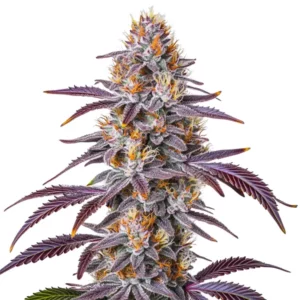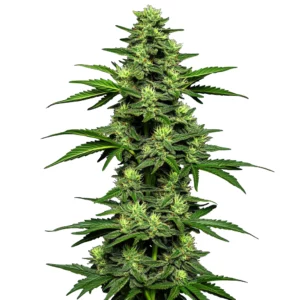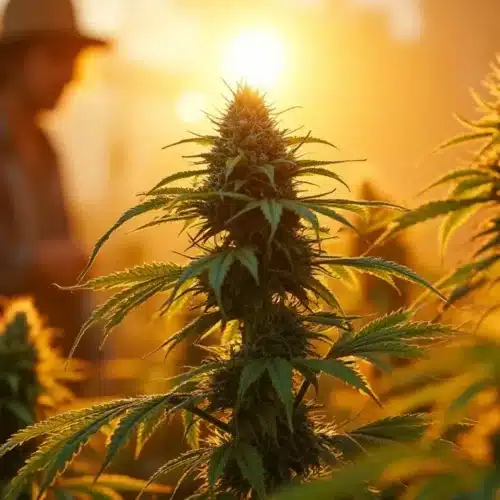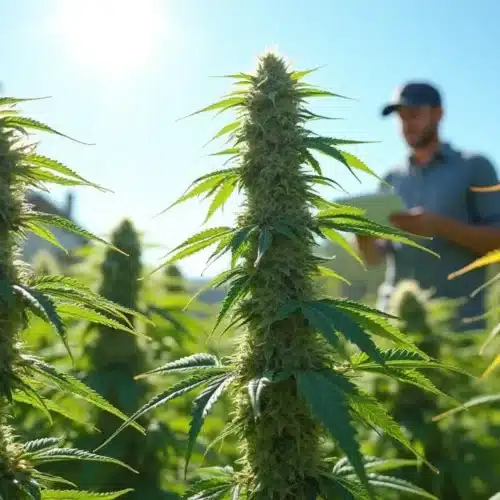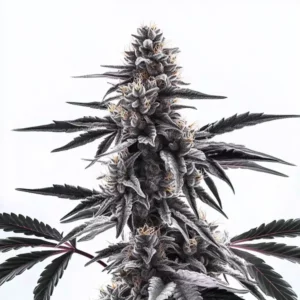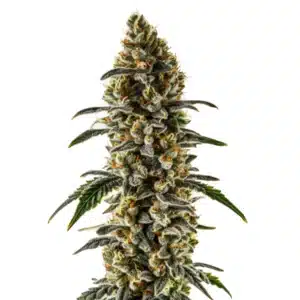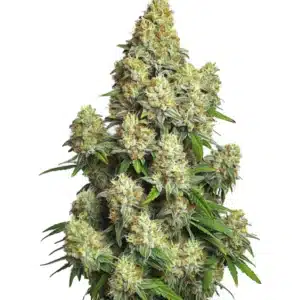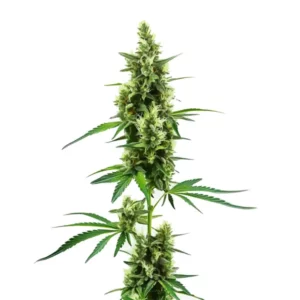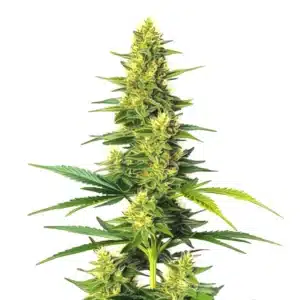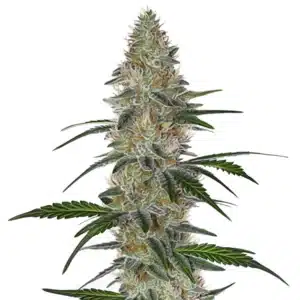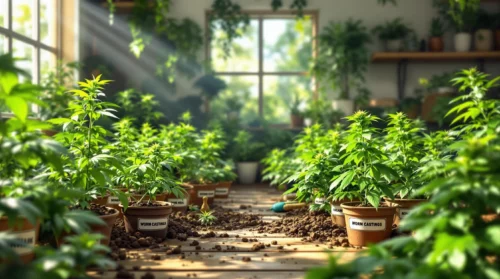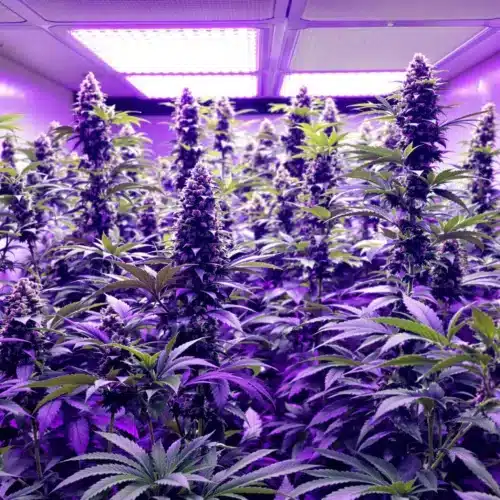Knowing the Differences Between Indoor and Outdoor Growing
Key Differences in Environment and Control
Indoor setups offer controlled environments where light, temperature, and humidity remain steady. Outdoor growing, on the other hand, brings natural sunlight and seasonal changes that can benefit plant growth in unexpected ways. The change can improve yields if you adjust your techniques accordingly. Switching from indoor to outdoor requires a clear understanding of these differences, allowing you to plan a smooth transition and keep your plants healthy in their new setting.
Different growing environments influence plant behavior in many ways. Indoor conditions provide predictability, while outdoor growth introduces natural challenges like wind and varying temperatures. Both methods have benefits and drawbacks that you must consider. By comparing these conditions side by side, you can decide which factors matter most to you and make adjustments that ensure the best results when switching from indoor to outdoor. Your success depends on adapting to nature’s rhythms while retaining a structured approach.
Benefits and Challenges of Each Setup
Indoor growing gives you tight control over every element, reducing unexpected risks. However, it can limit the natural development that outdoor environments encourage. Outdoor growing exposes your plants to full-spectrum sunlight, which often leads to stronger growth and larger yields. Yet, outdoor setups may also introduce pests and weather-related issues. Weighing these benefits and challenges helps you make an informed decision when switching from indoor to outdoor cultivation for a more natural and rewarding harvest.
Balancing the pros and cons of each system is key. Indoor setups provide convenience, but outdoor growing can offer cost savings and robust plant development. The differences mean that switching from indoor to outdoor is not just a physical move but also a shift in cultivation strategy. By carefully assessing both options, you can plan adjustments that maximize growth while minimizing potential setbacks. This balance ensures your transition is both efficient and successful.
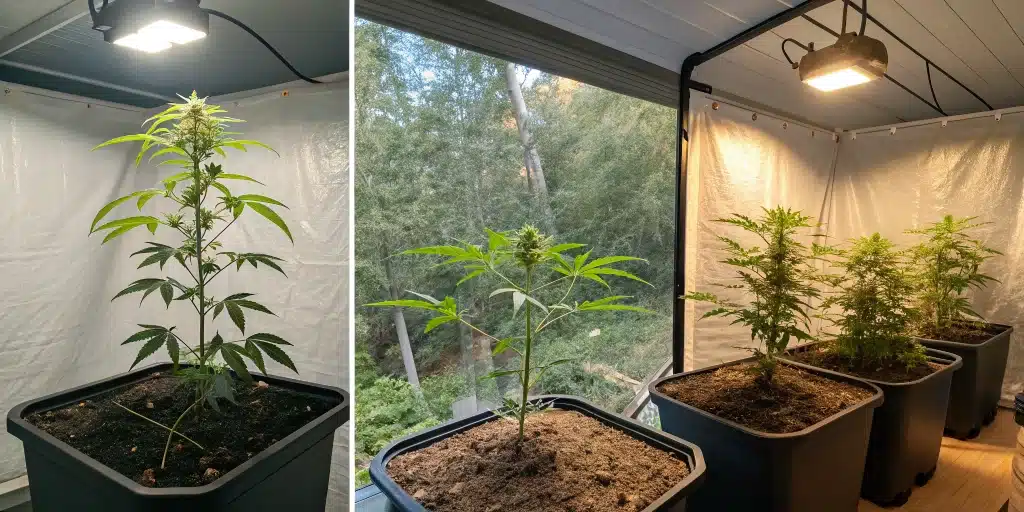
Promos & Deals
Planning Your Transition from Indoor to Outdoor
Assessing Your Grow Space and Location
Before making any changes, evaluate your outdoor area. Look at factors such as sunlight exposure, soil quality, and local weather patterns. A thorough assessment will help you determine if your chosen location is suitable for your plants. When switching from indoor to outdoor, take time to inspect the space and ensure it meets your plant’s basic needs. Consider accessibility for watering and protection from extreme weather as part of your overall plan.
Examine every detail of your potential outdoor space. Check the soil’s fertility and drainage, as well as the amount of natural light the area receives throughout the day. Understanding these factors is important in deciding if your garden can support healthy growth. This careful evaluation will set a strong foundation for your transition. With a clear picture of your environment, you can plan adjustments that optimize conditions when switching from indoor to outdoor cultivation.
Budgeting and Resource Considerations
Planning a successful transition requires careful budgeting. You may need to invest in new equipment like outdoor lighting, irrigation systems, or protective covers. Evaluate what resources you already have and what additional supplies will be needed. Financial planning is an essential part of switching from indoor to outdoor and helps ensure you make smart investments that boost plant performance. Make a list of necessary items and set a realistic budget before beginning the transition.
Resource allocation is key to a smooth shift. Determine which items can be reused and which new tools are required for outdoor growing. Balancing costs with expected benefits allows you to transition efficiently without overspending. This financial planning stage ensures that every dollar contributes to a healthier and more productive garden. With a clear budget and resource plan, you are well prepared for switching from indoor to outdoor in a cost-effective manner.
Adapting Your Growing Techniques
Adjusting Light, Temperature, and Nutrient Strategies
Indoor environments rely on artificial light and controlled temperatures. When moving outdoors, you must adapt to natural light cycles and variable temperatures. Adjust your nutrient schedule to match the outdoor growth cycle, as plants may need different feeding routines when exposed to natural elements. Switching from indoor to outdoor means rethinking how you manage light and temperature to support optimal plant growth. Embrace nature’s rhythm while fine-tuning your care methods for robust results.
Changes in light intensity and temperature require you to modify your cultivation practices. Monitor your plants closely during the transition to see how they react to the new environment. Make gradual changes to your nutrient mix to prevent shock and promote steady growth. This approach ensures that your plants adapt well as they shift from a controlled indoor setting to a dynamic outdoor garden. With careful adjustment, switching from indoor to outdoor becomes a rewarding process with vibrant, healthy plants.
Training and Pruning Methods for Outdoor Growth
Outdoor growing may require different training and pruning techniques compared to indoor setups. Plants may benefit from more extensive pruning to manage growth and promote better air circulation. Training methods such as topping or low-stress training help shape your plants to withstand outdoor conditions. These techniques enable you to maximize light exposure and increase yield. When switching from indoor to outdoor, adapting your training methods is essential for maintaining plant health and achieving a bountiful harvest.
Proper pruning can also help prevent diseases and support structural strength in your plants. Outdoor environments often expose plants to wind and rain, making sturdy branches a necessity. Regularly trimming excess growth and repositioning branches can boost overall productivity. Employ simple and effective training techniques to ensure your plants develop well in the new outdoor setting. This careful management makes switching from indoor to outdoor a smooth and productive transition for every garden.
Managing Environmental Variables
Dealing with Weather and Climate Changes
Outdoor growing means your plants will face changing weather and seasonal shifts. Prepare for these variations by planning for rain, wind, and temperature drops. Simple measures like installing windbreaks or temporary covers can protect your garden. When switching from indoor to outdoor, it is important to adapt to nature’s unpredictability. Regularly monitor weather forecasts and adjust your care routine accordingly to keep your plants safe and thriving in variable conditions.
Adapting to climate changes involves proactive strategies. Ensure that your plants have enough protection during unexpected cold snaps or heatwaves. Adjust your watering schedule based on rainfall and use natural mulches to regulate soil temperature. By taking these steps, you can manage the challenges of an outdoor environment effectively. The key to switching from indoor to outdoor is preparing for and mitigating weather impacts while allowing your plants to benefit from natural conditions.
Pest and Disease Management Outdoors
Outdoor gardens may attract more pests and diseases than indoor setups. Implement natural prevention techniques such as companion planting and organic insecticides to keep harmful bugs at bay. Regular inspection of your plants is essential to catch any issues early. When switching from indoor to outdoor, adapting pest management strategies is critical to maintain plant health. Use natural remedies and proper sanitation methods to create a protective barrier around your garden.
Effective pest control also involves maintaining a clean growing area and using traps if necessary. Monitor for common pests like aphids, spider mites, and whiteflies. Early intervention helps prevent infestations that could damage your crop. By integrating organic solutions and keeping a vigilant eye, you can maintain a healthy garden while switching from indoor to outdoor cultivation. This proactive approach minimizes risks and supports steady growth in your outdoor garden.
Tips for a Successful Transition
Gradual Adjustment and Acclimation Strategies
A smooth shift from a controlled indoor environment to an outdoor garden is best achieved gradually. Start by placing your plants outdoors for a few hours each day and slowly increase their exposure to natural conditions. This gradual acclimation helps reduce shock and lets your plants adjust to variations in light and temperature. When switching from indoor to outdoor, giving your plants time to adapt is key to ensuring long-term success in their new environment.
Taking small steps during the transition can prevent stress and ensure steady growth. Monitor your plants closely during this period and note any signs of distress or adjustment. Gradual acclimation allows you to modify your care routine based on the plant’s response. This method fosters a smooth transition, making the process of switching from indoor to outdoor both manageable and rewarding. A patient, measured approach results in healthier plants ready to flourish outdoors.
Monitoring Plant Health and Performance
Keeping a close watch on your plants during the transition is essential. Regular observation of leaf color, growth patterns, and overall vigor helps you spot problems early. Use simple checklists to record daily progress and identify any issues that may arise. When switching from indoor to outdoor, continuous monitoring allows you to make timely adjustments and keep your garden on track for a successful yield.
Consistent tracking of plant performance provides clear insights into the effectiveness of your new outdoor setup. By noting even small changes in plant health, you can quickly adapt your watering, nutrient, and pest control strategies. This vigilant approach ensures that your plants thrive in their new environment. With steady monitoring, the shift from indoor to outdoor becomes a dynamic process where each adjustment contributes to a healthy, productive garden.
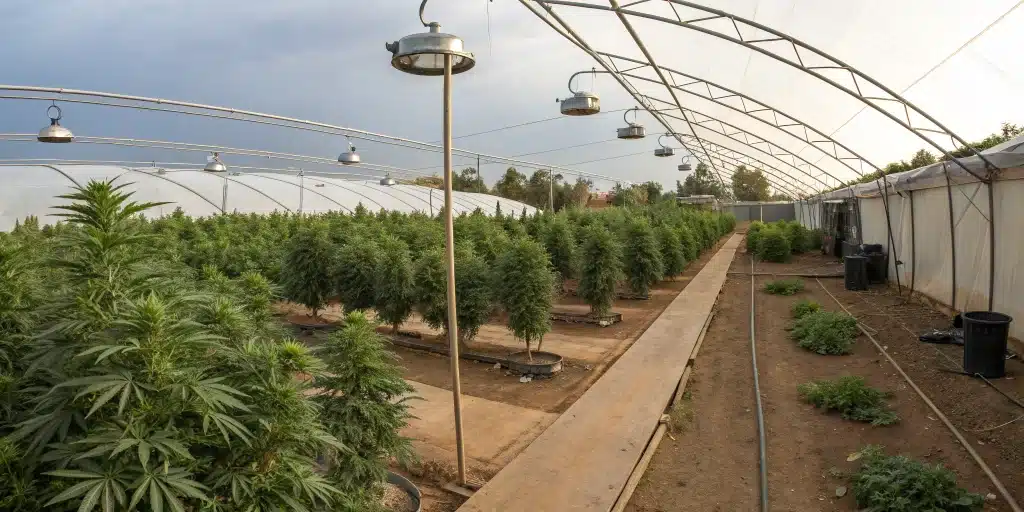
FAQs about Switching from indoor to outdoor
What are the main challenges when switching from indoor to outdoor?
Switching from indoor to outdoor can present challenges such as adapting to natural light cycles, variable weather, and increased pest activity. Gardeners must adjust watering schedules, nutrient plans, and protective measures accordingly. It is important to prepare for weather changes and use natural pest control methods to keep plants healthy. Monitoring progress closely helps address any issues early on, ensuring a smooth transition with minimal disruption to plant growth.
How can I prepare my indoor plants for outdoor growing?
Start by gradually exposing your indoor plants to outdoor conditions. Place them in a shaded area and slowly increase the time spent outside over several days. Adjust the watering and nutrient schedule to match outdoor conditions and use protective covers during extreme weather. This gradual transition allows your plants to adapt to natural sunlight, temperature fluctuations, and wind exposure, ensuring a healthy adjustment when switching from indoor to outdoor cultivation.
What steps should I take to protect my plants once they are outdoors?
After moving your plants outdoors, use measures such as installing windbreaks, applying organic pest control, and using mulch to protect soil moisture. Regular monitoring for pests and diseases is essential. Adjust watering schedules based on weather changes and provide temporary covers during extreme conditions. These steps help safeguard your garden and promote healthy growth when switching from indoor to outdoor, ensuring that your plants remain robust and productive throughout their outdoor cycle.

